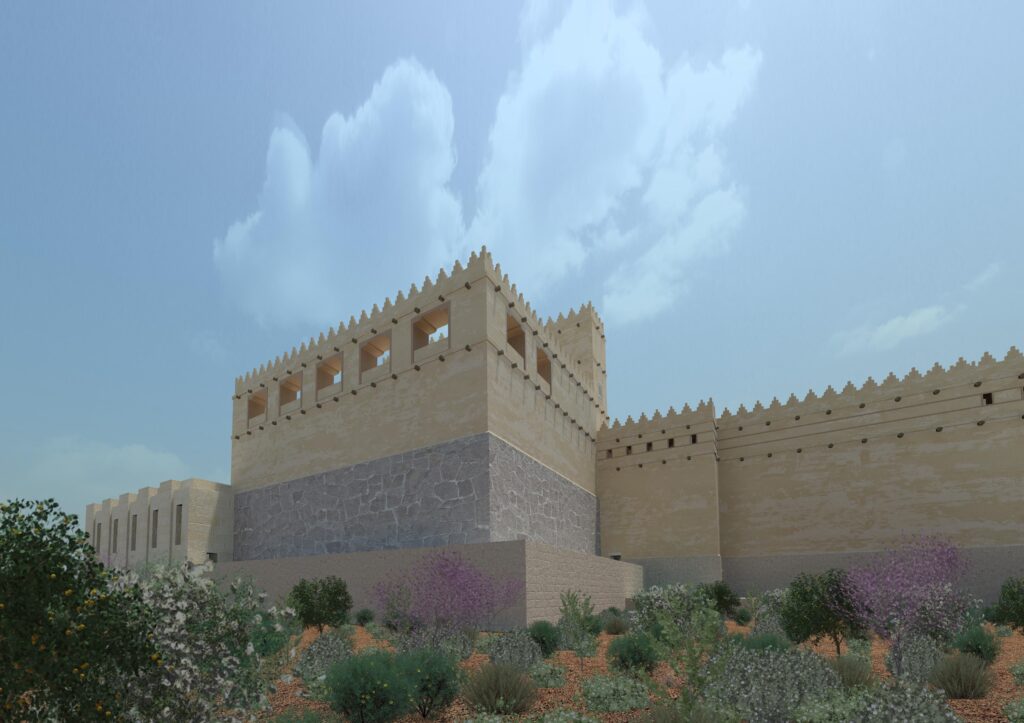The Society hosts a number of online lectures throughout the year. Here is a summary of past events for 2023, with links to the lecture recordings.
YONATAN ADLER — The Origins of Judaism: An Archaeological-Historical Reappraisal
19 January 2023 (online, via zoom)

Throughout much of history, the Jewish way of life has been characterized by strict adherence to the practices and prohibitions legislated by the Torah: dietary laws, ritual purity, circumcision, Sabbath regulations, holidays, and more.
But when did this unique way of life first emerge, and why at that specific time?
In this lecture, Yonathan Adler explored how ancient texts can be used alongside archaeological discoveries to reveal the earliest evidence of Torah observance among ordinary Judeans. Animal bones, purification pools, chalk vessels and figural representations provide clues to the lived experience of these earliest observers. The presentation was framed around his recent book, The Origins of Judaism: An Archaeological-Historical Reappraisal (Yale University Press 2022),
Yonatan Adler is Associate Professor at the Department of Land of Israel Studies and Archaeology at Ariel University, where he also heads the Institute of Archaeology. Recent excavations include the sites of ‘Einot Amitai and Reina in the Galilee. In 2018, he was appointed by the Minister of Culture to the Israeli Council for Archaeology.
A recording is now available on the AIAS YouTube.
THE ODED LIPSCHITS LECTURE TOUR
The Oded Lipschits Lecture Tour
In 2023, Professor Oded Lipschits was invited to the UK to give a series of special lectures in honour of the AIAS Diamond Jubilee. These were delivered at a range of venues around the country in London, St Andrews, Oxford and Southampton.
Director of the Sonia and Marco Nadler Institute of Archaeology of Tel Aviv University, Professor Lipschits directed the Ramat Rahel Archaeological Project from 2004–2010, and is currently director of the Lautenschlaeger Excavations at Asekah and excavations in the temple of Tel Moza. He was awarded the prestigious EMET Prize for the field of Archaeology in 2022. We were delighted to have him shared the results and wider-implications of these groundbreaking projects with the Society and its members.
This tour was supported by a generous legacy from the late Dr Mike Sommers, former AIAS Vice President and Committee Member, who is very much missed by us all.

ODED LIPSCHITS — The Sound of Silence: About Palaces, Administrative Centres and Temples near Jerusalem Completely Ignored by the Biblical Text
20 February 2023 ( UCL Institute of Archaeology).
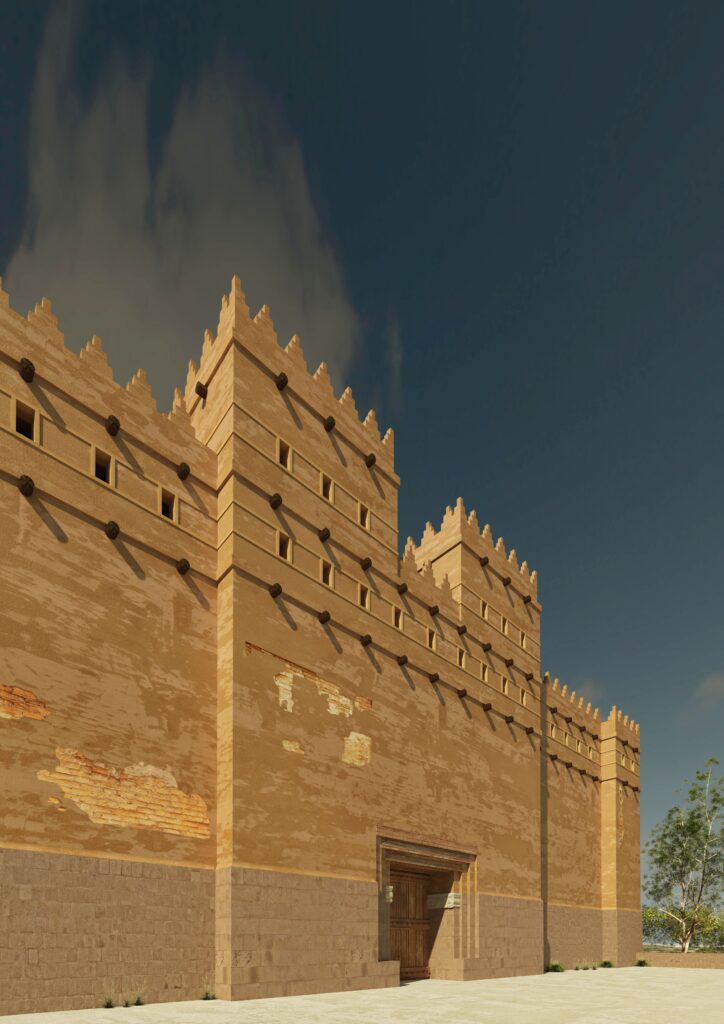
In a generously illustrated lecture, Professor Lipschits introduced us to some of the rich archaeological discoveries that have been made around Jerusalem in recent years – a magnificent palace, temple, and villa overlooking Jerusalem from the south, dated to the end of the First Temple Period (late 8th century–early 6th century BCE).
Despite their opulence and evident importance to the politics, economy and administration of Judah, these structures were omitted from biblical descriptions of this period. Professor Lipschits explored the reasons why.
This lecture was co-hosted by the UCL Institute of Archaeology and held in-person at UCL. A lecture recording will not be available.
ODED LIPSCHITS — Archaeology in the Land of the Bible: New Methods and New Discoveries that Changed our Understanding of the Biblical Period
23 February 2023 (University of St Andrews)
Archaeology is a powerful research tool for uncovering the secrets of the past in general, and those of the biblical period in particular. New methods that have developed in the last ten years enable a wealth of new information and insights that were not known before about the world where the biblical descriptions were written, about the people who wrote these descriptions, and about the people who read them.
In this lecture, Professor Lipschits presented some of these methods, alongside new and exciting discoveries from recent years that have changed the way we understand the biblical period.
This lecture was co-hosted by the University of St Andrews: a recording will not be available.
ODED LIPSCHITS — Judah under the Assyrian Empire: New Insights from Archaeology
1 March 2023 (Kings College London)

The Assyrian Empire’s takeover of the Levant and Judah’s transformation into a vassal kingdom in the later eighth century BCE were the most defining and important events in its history. This had major consequences for the administration of its economy, impacting all areas of life.
In this lecture Professor Lipschits explored the characteristics of these changes in the material culture of Judah. He argued that these went on to become the hallmark of its archaeology under the rule of Assyria, Babylon, Persia, and the Ptolemaic and Seleucid kingdoms — until the establishment of the Hasmonean kingdom in the second half of the second century BCE.
This period was doubly important, as it also bore witness to the editing and writing of much of the Old Testament, the shaping of Second Temple Judaism, and the foundations for the religion and cult that characterises Judaism in later generations. So it was fascinating to learn more about the contribution made by archaeology to our understanding of the development of Judah at this time.
This lecture was jointly hosted by the Department of Theology and Religious Studies at Kings College London.
ODED LIPSCHITS — New Light on Jerusalem and its Surroundings during the Reign of King Manasseh
2 March 2023 (Oxford Centre for Hebrew and Jewish Studies, and online)
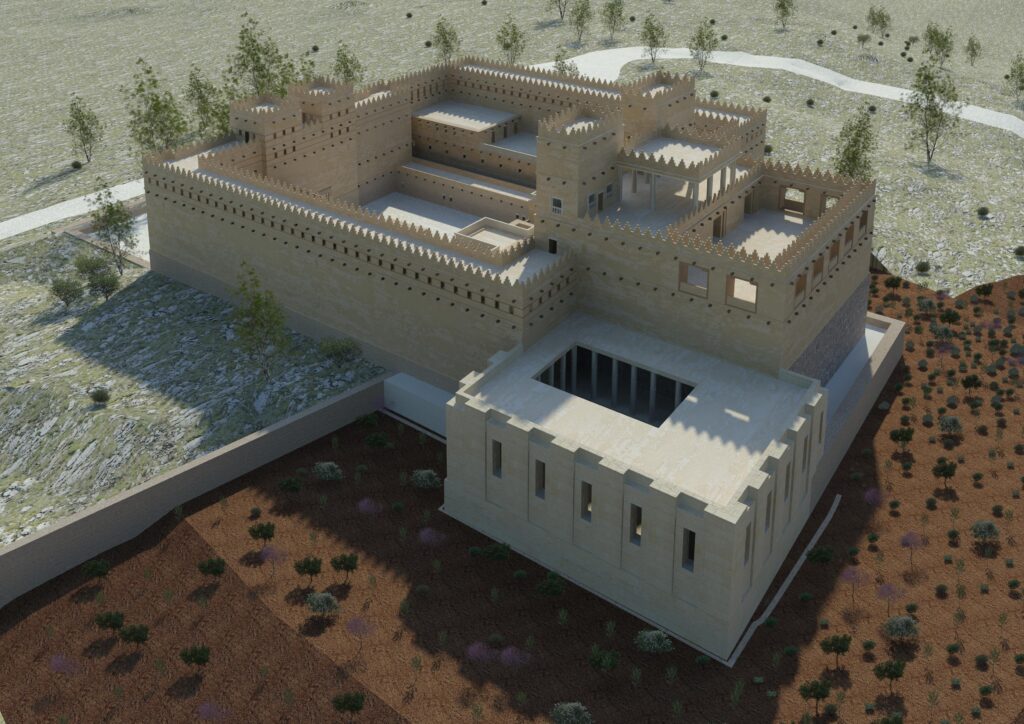
In this presentation, we learned how discoveries from excavations in and around Jerusalem have shed new light on the reign of King Manasseh, the longest-ruling king of Judah.
At this time there was unprecedented prosperity both in, and around Jerusalem — and yet none of this is reflected in the Book of Kings. Indeed, there we see King Manasseh being defined as the greatest sinner of all Judah’s kings, who caused the destruction of Jerusalem.
The mismatch between the archaeological and biblical records was discussed in some depth; with the political realities on the ground being ignored by the biblical authors and editors to aid presentation of their own, theologically-driven agendas.
ODED LIPSCHITS — A New Iron Age Temple Discovered near Jerusalem and its Implications for our Understanding of the Development of Cult and Religion in Judah
6 March 2023 (online)
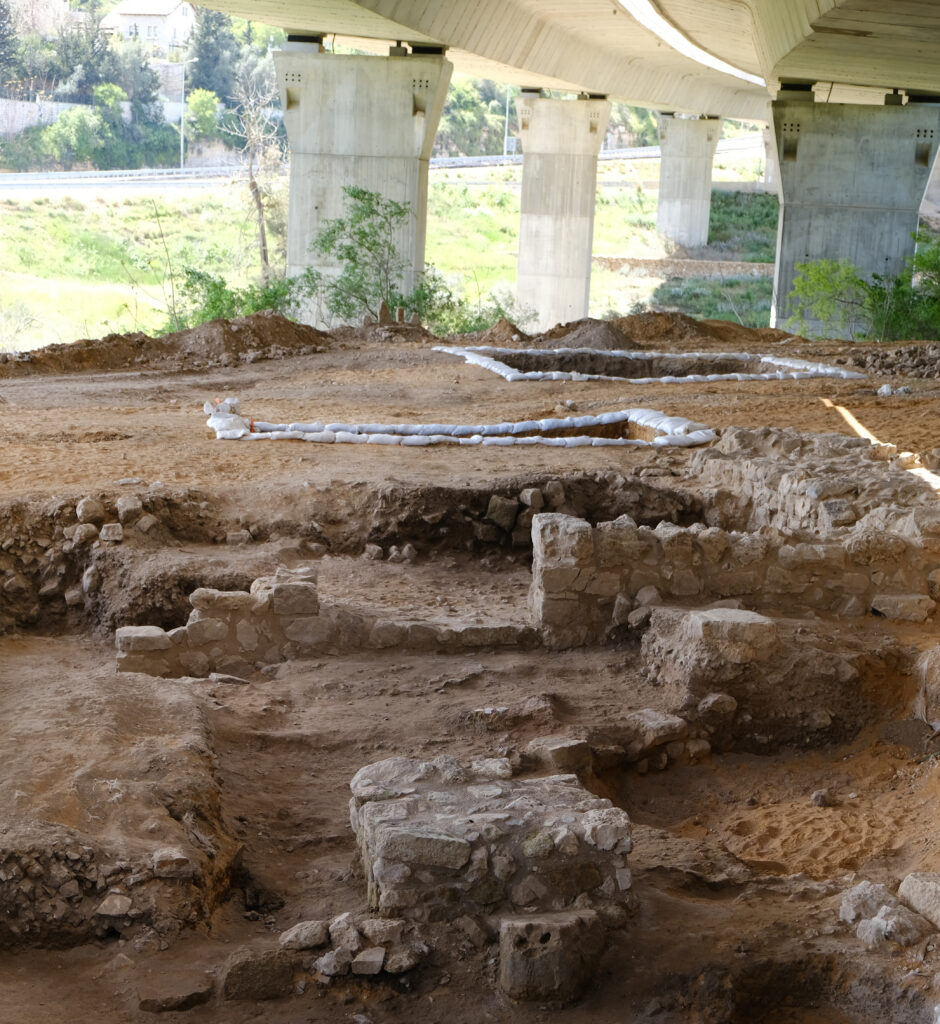
In his final public lecture of the tour, Professor Lipschits turned to the site of Tel Moza, where roadworks led to the discovery of a Judean Temple only 7 km from Jerusalem.
Initially excavated by a team from the Israel Antiquities Authority, the current project, directed by Professor Lipschits and Shua Kisilevitz, began in 2019, and is still ongoing.
We heard how an industrial zone, initially used to house numerous domed granaries, developed into an important cultic area – with a small temple constructed in the early 10th century, replaced by a more impressive structure some 100 years later, which was in use until Persian times.
This was clearly an important site – and yet many questions remain unanswered. Who was the deity worshipped? What was the relationship of the temple to cult in Jerusalem? And why do we hear nothing of the Moza temple in biblical texts about this period?
This lecture was co-hosted by the University of Southampton. A recording of this lecture will be posted here shortly.
SHIMON GIBSON — Forty Years of Archaeological Work on Mount Zion in Jerusalem — Insights and Reflections
27 April 2023 (online)

This presentation explored the fascinating history of excavations at Jerusaem and Mount Zion — from the work of 19th-century pioneers such as Wilson, Warren, Vincent and others, through to the more scientific approach taken by Kathleen Kenyon and Doug Tushingham in the 1960s, Magen Broshi in the 1970s, all the way up to the present-day project, directed by the speaker.
Varying theories for the extent of Iron Age Jerusalem were explored, through and we saw how our understanding of the site and its fortifications has changed over the course of the 20th century, as new evidence has come to light.
This flying history of archaeology through the lens of a single site then concluded with a special preview of the key research questions for the coming Mount Zion field season.
Shimon Gibson is Professor of Practice in History and Archaeology in the History Department of the College of Liberal Arts and Sciences at the University of North Carolina at Charlotte. Director of numerous excavations and surveys in Israel/Palestine, he has been archivist of the Palestine Exploration Fund (1989–1995), and a Member of the Anglo-Israel Archaeological Society Committee since the early 1980s. His co-authored book, Tourists, Travellers and Hotels in Nineteenth-Century Jerusalem, appeared as PEF Annual XI in 2013.
A recording of this lecture can be found on the Society’s YouTube channel.
SHLOMIT WEKSLER-BDOLAH — Herodian Jerusalem in Light of New Finds from the Western Wall Tunnels
1 June 2023 (online)
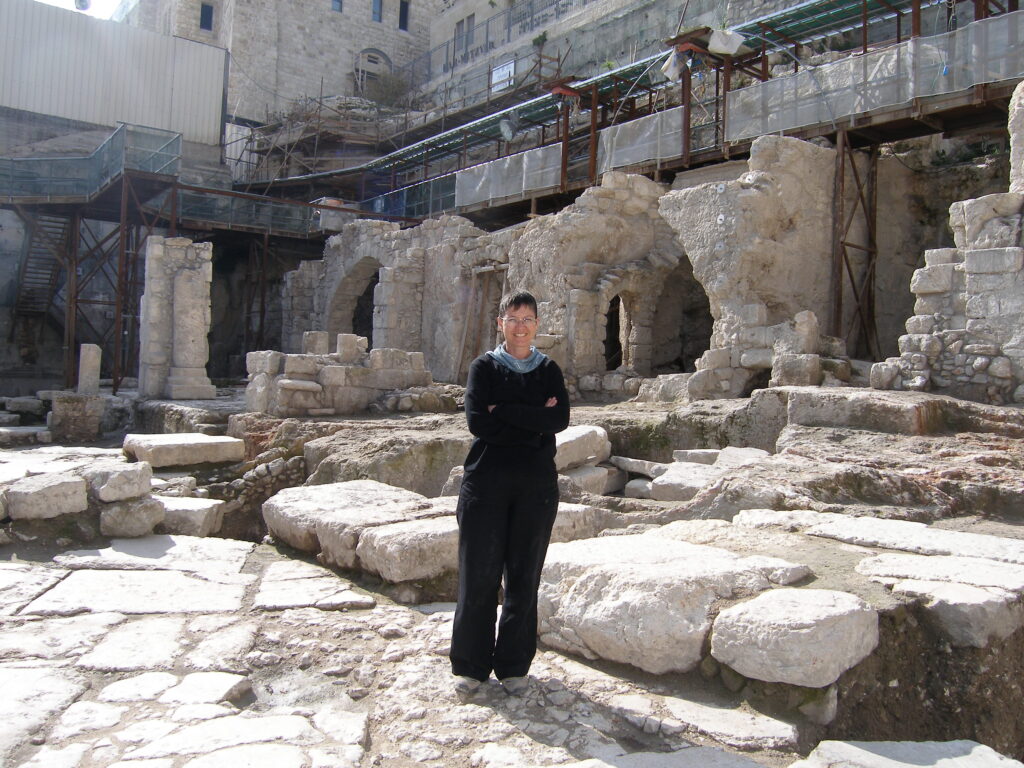
In this lecture, AIAS members were treated to an account of recent discoveries made in tunnels at the foot of the Herodian Temple Mount in Jerusalem. There was intensive construction in this area during the late Second Temple period (1st century BCE to 1st century CE), and finds seem to support historic accounts of the civic nature of this part of the city.
These major construction works were designed to shape the urban topography of ancient Jerusalem — draining the area, and adorning it with impressive buildings. But who was behind this work? City leaders? Or perhaps even the king?
Dr Weksler-Bdolah is a specialist on the archaeology of Jerusalem, and has been directing excavations for the Israel Antiquities Authority since 1990. Projects include excavations at the Western Wall Plaza and the Western Wall Tunnels in the Old City. She is the author of numerous books and articles, including Aelia Capitolina – Jerusalem in the Roman period, in Light of the Archaeological Research (Brill, 2020).
Visit AIAS YouTube for a recording of this lecture.
RONNY REICH — The Jewish Character of Jerusalem of the Early Roman (Second Temple) Period as Attested by the Archaeological Record
29 June 2023 (online)

Jerusalem of the late Second Temple period was the Temple City. The Jewish faith permitted the existence of a single temple, which developed the pilgrimage of the people to their single place of worship. Pilgrimage became a phenomenon which characterized the city.
Professor Reich’s lecture explored the many archaeological remains which characterize the peculiar nature of the Jewish temple-city, with highlights including:
- The extreme abundance of miqwa’ot (ritual baths).
- The existence of large open water pools, fed by aqueducts, to supply water to pilgrims.
- The total lack of pork bones in the contemporary waste found in private houses, public areas and the city-dump.
- The drastic decline in the import of wine in Rhodian amphorae from the Aegean region.
- The peculiar spatial distribution in the city of cooking pots (the most abundant type of vessel found), including the concentrations of used pots abandoned intact at the city’s perimeter.
- The abundance of stone (chalk) vessels.
- The peculiar burial practices liqut and pinui (clearing of burials for city development).
Most of these features clearly relate to the Jewish religious rules (halakha) and are absent in non-Jewish settlements in the country.
Ronny Reich is Emeritus Professor of Classical Archaeology at the University of Haifa, and Chair of the Israel Exploration Society. He co-directed excavations at the City of David from 1995-2010, and has authored over 200 academic articles and numerous books, the most of recent being Day by Day, Everyday Life of the Jewish Community in the Late Second Temple Period (2021, in Hebrew).
Visit AIAS YouTube for a recording of this lecture.
ERIC M. MEYERS — Jesus In Galilee: An Archaeological Perspective
25 July 2023
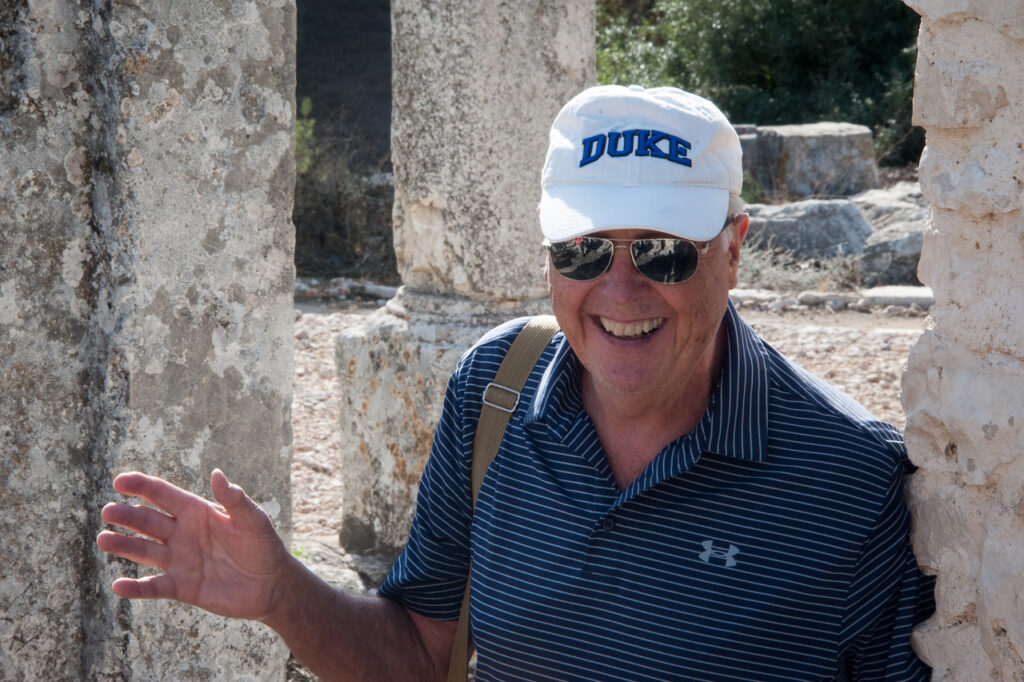
Recent archaeological discoveries in Galilee have shown that the region was overwhelmingly Jewish in the time of Jesus, with only handful of sites that may be identified as gentile or non-Jewish. In addition, the identification of early synagogues from this period has allowed us to better understand the many references in Josephus and the New Testament to purpose-built centres, such as Magdala.
In this lecture, Professor Meyers presented evidence to suggest that Jews at most these early Roman sites were practicing purity laws based on the Torah. He then went on to draw a more nuanced and accurate picture of Jewish Galilee in the most recent quest for the historical Jesus.
Eric Meyers is the Bernice and Morton Lerner Emeritus Professor of Religious and Jewish Studies at Duke University. He founded the Center for Jewish Studies at Duke in 1972, and has been directing digs in Israel and Italy for over forty years, most recently at Sepphoris. He also served for three terms as President of ASOR (The American Schools/Society of Overseas Research).
Professor Meyer’s extensive publications include commentaries on Haggai and Zechariah in the Anchor Bible Series (co-authored with his wife, Carol Meyers), Sepphoris III (2018), and his entertaining memoir, An Accidental Archaeologist (2022).
Visit AIAS YouTube to watch a recording of this lecture.
JULIA HILLNER — From Here to Eternity: Fact and Fiction in the Empress Helena’s Travels to the Holy Land
21 September 2023

This lecture followed Helena on her famous journey through the Eastern provinces of the Roman empire – culminating in her visit to biblical sites in Jerusalem, Bethlehem and elsewhere in the region.
In it, Professor Hillner compared the two extant sources for her presence in the East — those of Eusebius of Caesarea, and Athanasius of Alexandria. Their accounts give us contrasting views of the travelling empress.
She explored the politics behind the Empress Helena’s visit to the Holy Land, the route she may have taken, how she travelled, and her interactions with the people she encountered.
Did she really discover the ‘True Cross’? And can we consider her a pilgrim, and church founder in the Christian ‘Holy Land’?
Julia Hillner has been Professor of Ancient History at the Bonn Center for Dependency and Slavery Studies since 2021. Her research focusses on the history of the family and the household, crime and punishment, and the City of Rome in late antiquity (c. 300-700).
She is the author of three monographs, including Helena Augusta: Mother of the Empire (Oxford University Press, 2023).
A recording is available on the AIAS YouTube channel.
KEN DARK — The Archaeology of Jesus’ Nazareth
19 October 2023

Nazareth was rarely mentioned in written sources until the Crusader period, but recent archaeological research has built up a picture of the appearance, culture and economy of Roman-period Nazareth — the Jewish village that provided the physical context for the childhood of Jesus of Nazareth.
This lecture, based on Ken Dark’s recent book Archaeology of Jesus’ Nazareth (Oxford University Press 2023), presented recent research on first-century Nazareth and its implications for archaeology both in the Galilee and elsewhere.
Professor Ken Dark has conducted archaeological research on Nazareth for almost 20 years. He was Director of the Nazareth Archaeological Project’s fieldwork in and around the modern city of Nazareth between 2004 and 2010. He is currently a Visiting Professor at Kings College London, a Trustee of the AIAS, and Editor-in-Chief of our journal Strata.
A recording of this lecture is available on the AIAS YouTube channel.
DAVID JACOBSON — The Beginnings of Judaean Coinage
16 November 2023
Judaean coinage had two ‘beginnings’.
The first Judaean coins were minted in the late 5th century, towards the end of Achaemenid Persian rule in the Levant. This run of production was brought to an end in the mid 3rd century BC.
There was a fresh start under Hasmonaean rule, with the patronage of Antiochus VII Euergetes (Sidetes), with production lasting till the overthrow of Antigonus Mattathias by Herod the Great in 37 BCE.
These two phases of coin issues are widely different in character. Professor Jacobson’s lecture explored the differences between them and the historical insights these provide.
Dr Jacobson holds doctorates in both Materials Science and Classical Archaeology. A current Trustee of the AIAS, he was formerly Editor of the Palestine Exploration Quarterly (1993–2015) and Strata (2019–2023).
His reserch currently focuses on Hasmonaean and Herodian history, architecture and numismatics. His most recent book, Agrippa II, the Last of the Herods (2019), was awarded the Shekel Prize Medal by the American Israel Numismatic Association for 2021.
A recording of this lecture will be posted on the AIAS YouTube channel in January 2024.
CHRISTOPHER ROLLSTON — The Schooling of a Scribe in Ancient Israel
Wednesday, 6 December 2023

Writing in the ancient Near Eastern world was a complex technology. This is true not only of the complicated non-alphabetic writing systems of Mesopotamia and Egypt, but also of the alphabetic writing systems of the Levantine world of ancient Israel.
In this lecture, Professor Rollston examines the evidence for the education of a scribe in ancient Israel and Judah, challenging the view that the ancient Hebrew alphabet was easier to learn than other types of script. He concludes by demonstrating why he believes First Temple period scribes were given a formal, standardised education.
Christopher Rollston is Professor of Northwest Semitic Languages and Literatures, and Chair of the Department of Classical and Near Eastern Languages and Civilizations at the George Washington University.
He is a leading scholar in the field of Northwest Semitic epigraphy, with research interests including ancient writing practices, scribes and scribal education, ancient literacy, the origins of the alphabet, and modern (and ancient) forgeries.
He has published extensively on these topics, and was awarded ASOR’s Frank Moore Cross Award for his book Writing and Literacy in Ancient Israel in 2011. His latest monograph, Pious Forgeries: Forging History in the Ancient World of the Bible and the Modern World of Biblical Studies, will be published by Eerdmans in 2024.
A recording of this lecture will be posted on the AIAS YouTube channel in January 2024.


